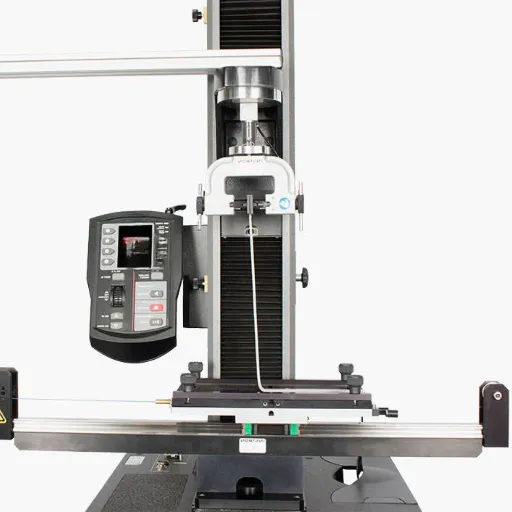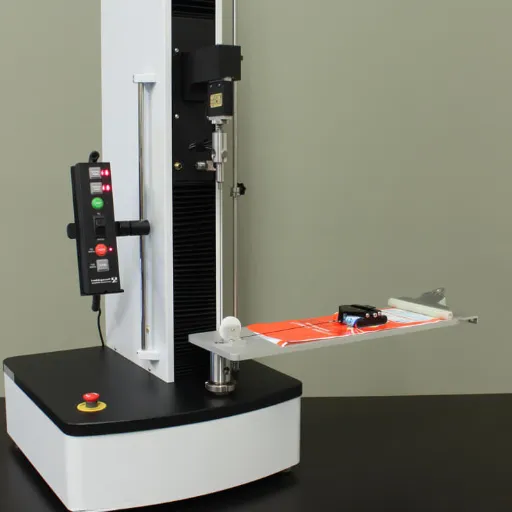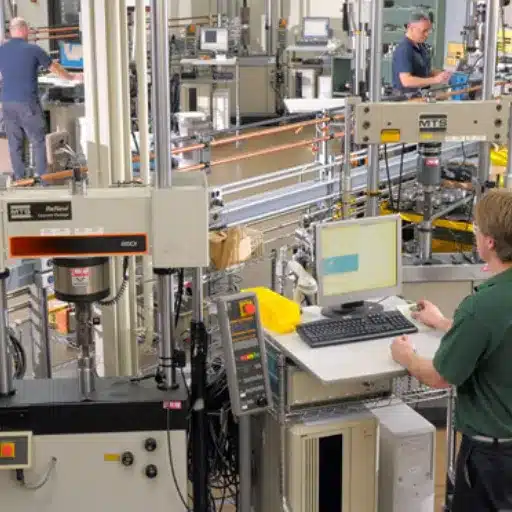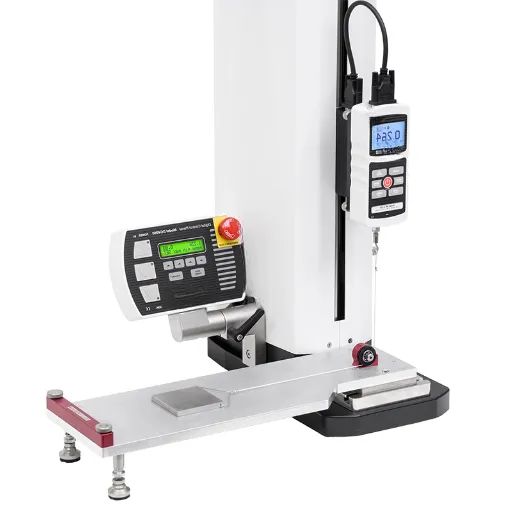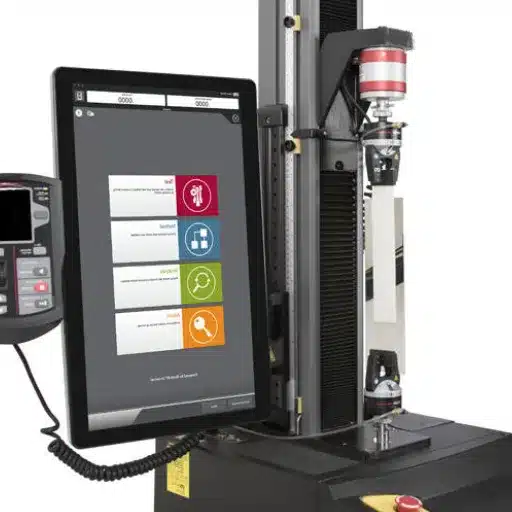Planar Biaxial testing is considered the primary means of investigating mechanical properties and the performance of a material under real applications. A planar biaxial test, being specialized and highly information-rich, serves as an important procedure by which the multi-stress behavior of the material in question can be determined. This article serves to educate, developing a thorough understanding of the planar biaxial test, its methodology, its significance, and its applications across diverse fields such as aerospace, automotive, and biomedical engineering. For the researcher who desires comprehensive data from tests or a working professional trying to improve material performance, this article elucidates the working principles of the planar biaxial test to bring about innovation in the field and lend further reliability to materials.
Introduction to Planar Biaxial Testing
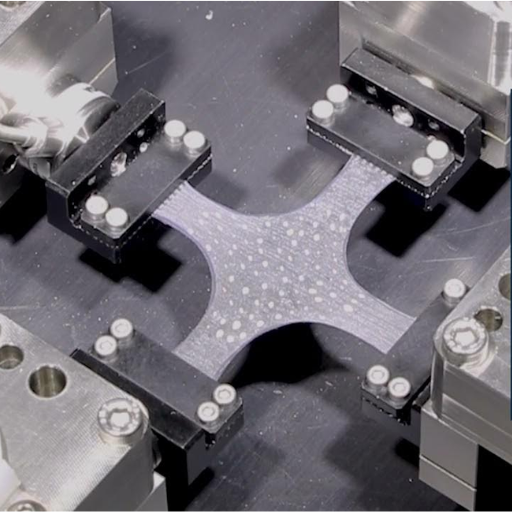
Planar biaxial testing is an extremely specialized material testing method that simulates multi-directional states of stress that materials are subjected to in real life. Differing from uniaxial tests that measure material behavior under the application of stress in a single direction, planar biaxial testing subjects the material to stresses simultaneously along two perpendicular axes. The presence of these biaxial stresses hence allows a comprehensive study of material properties like elasticity, yield strength, and criteria for failure under complex grant loading conditions. This test presents far greater significance in fields where materials undergo multidirectional forces while developing aerospace components, automotive structures, or biomedical devices like vascular grafts.
Definition and Importance of Biaxial Testing
The term biaxial testing describes a particular mechanical testing method wherein the material or structure is subjected to stress or strain along two mutually perpendicular axes. This is essential for offering an accurate characterization of materials under complex real-world situations with loadings that one-dimensional tests cannot exhibit. By the simultaneous application of forces in more than one direction, biaxial testing dictates whether or not the material displays anisotropic behavior, how the material deforms in parametric terms, and the shape of the yield surface, including the final point of failure. This becomes more crucial in fields where high levels of accuracy and safety are demanded, such as aerospace engineering, where materials are subjected to multi-directional stresses in flight, or biomedical device design, where components like arterial stents or artificial joints work under multifaceted loading schemes.
Recent literature propounds the growing significance of biaxial tests throughout advanced manufacturing and material science. With the advent of digital modeling and simulation tools, experimental biaxial tests have come to be the ultimate criterion to validate any given computational prediction. Meanwhile, improvements in testing equipment (like automated systems of outstanding accuracy) continuously provide opportunities to garner a deeper appreciation of material properties. Biaxial testing thus forms an assured factor in the product development cycle for reliability, safety, and optimization.
Fundamental Principles of Planar Biaxial Tests
The planar biaxial tests play a crucial role in studying the material behavior toward multi-directional stress states. As a fundamental principle of biaxial actuators, the planar configuration applies efforts controlled in two directions perpendicular to one another, intending to reproduce the real working conditions encountered in the application of structural components, biomedical devices, and soft materials. Through this testing method, important insights are drawn about material anisotropy, yielding, and failure mechanisms.
To capture non-standard sets of stress-strain data, it involves crucial systems of precise measurements and monitoring processes that include load cells and extensometers under simultaneous biaxial loading. The geometries of specimens are exquisitely crafted, more often cruciform in shape, to ensure uniform stress distribution in the test region, while also minimizing edge effects. Calibration and alignment of the testing machines take first place as far as accuracy and reproducibility of test results are concerned. Moreover, computational modeling is frequently added to help to unravel more complex biaxial states of stress and to relate the experimental data with theoretical predictions.
Simultaneously capturing material response in two dimensions helps make planar biaxial testing a more effective tool in assessing actual performance, which leads to material design and optimization for demanding applications. It is considered the most dependable technique of trying to fill the gaps between uniaxial test data and real-world multi-axial stress states.
Overview of Testing Machines and Systems
Testing machines and systems for planar biaxial testing are designed to deliver precise controlled loading in multiple axes so as to simulate stresses imparted under real-world situations. Usually, the systems include rigid frames, servo-hydraulic or electromechanical actuators, and load cells to measure the forces accurately. These systems, most of the time, are coupled with real-time data acquisition systems that render the analysis of material behavior under complex loading conditions with high fidelity.
The latest of designs favor modularity and adaptability such that customized configurations can be designed for varying specimen geometries and material types. Lots of the newly devised systems utilize digital control interfaces that implement software solutions with algorithm-based calibration to further improve on efficiency and minimize operator error. Environment chambers are frequently included to mimic changing temperatures and humidity levels, thereby expanding the realm of test situations that can be simulated.
Mechanics of the Planar Biaxial Test
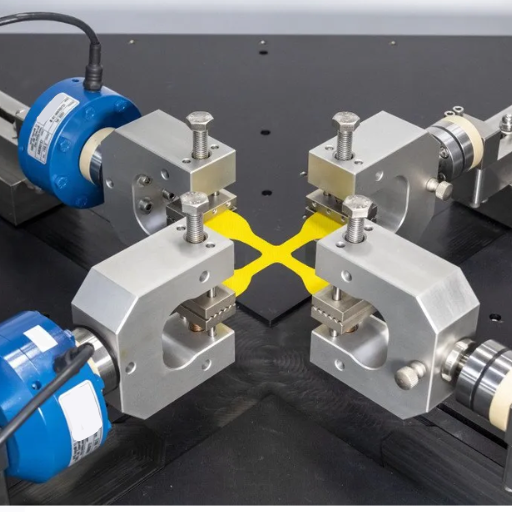
The planar biaxial test method requires the simultaneous application of controlled forces or displacements along two perpendicular axes of a specimen. This testing process aims at reproducing the complex multi-axial stress states experienced by materials during their real applications. The test begins by clamping or gripping the specimen on the testing device in such a manner that the stresses within the material are equally distributed. Load cells and displacement sensors are inbuilt in the whole arrangement to measure the loads applied and deformations with extreme precision. The testing data enable the determination of mechanical properties such as stiffness, elasticity, and anisotropy. Furthermore, depending on the nature of the problem, more elaborate computational models may be used to interpret the data, thus ensuring a more accurate correlation between the loads applied to the material and the material responses.
Understanding Biaxial Tensile Behavior
Biaxial tensile behavior describes how a material operates under stresses applied simultaneously along two directions. Essentially, this testing becomes vital in understanding the mechanical performance of materials for applications that involve such complex states of stressing as membranes, composites, and biological tissues. The stress-strain relation under biaxial circumstances thus provides relevant information on the anisotropy of a material, its yield strength, and its mode of failure. Established means for effecting such tests include using cruciform specimens and special test machines with actuators that independently control forces in each axis. For high precision in strain measurement during testing, advanced imaging systems and strain measurement techniques like Digital Image Correlation (DIC) are often employed. These data are then used to inform material models employed for simulation to forecast their performance under real-life conditions.
How Planar Biaxial Test Machines Operate
The planar biaxial test machines work by simultaneously subjecting the specimen to controlled loads or displacements along two orthogonal axes to enable monitoring of complex stress states within a material. Basically, these machines include a very rigid frame, actuators, and load cells, which together ensure the precise and independent application of forces or displacements along both axes. Specimens, usually cruciform or rectangular, are gripped by means of special fixtures that are designed to lessen edge effects and also to eliminate any variation in stress distribution. Advanced sensor systems will then be used; strain gauges or Digital Image Correlation (DIC) provide continuous monitoring of the strain and deformation behavior in real time, yielding high resolution for the data. Control software by itself is quite complex, managing multiaxial loading profiles capable of subjecting the specimen under study to various loading conditions, including proportional and non-proportional paths. Such conformity to loading paths facilitates the collection of very fine data useful in validating computational models, moving ahead in material characterization, as well as determining the boundary of their performance in complex industrial applications in aerospace, biomedical, and civil engineering.
Specimen Preparation for Accurate Testing
Proper specimen preparation is paramount to ensure the reliability and accuracy of a set of results generated from material testing. The first step in specimen preparation is the selection of a specimen from a section that is representative of the material in question in capturing the inherent properties of that material. It is performed with machining that is accurate to attain a geometry and surface finish that are standardized. Irregularities create variations in stress concentrations and defeat test validity. This is in addition to polishing and cleaning the surface, for instance, to remove contaminants that may interfere with the accuracy of the measurements. Through the entire process, adherence to the standards, whether ASTM or ISO, is crucial so that the tests are consistent and comparable with one another across a number of experiments.
Applications of Planar Biaxial Testing Across Industries
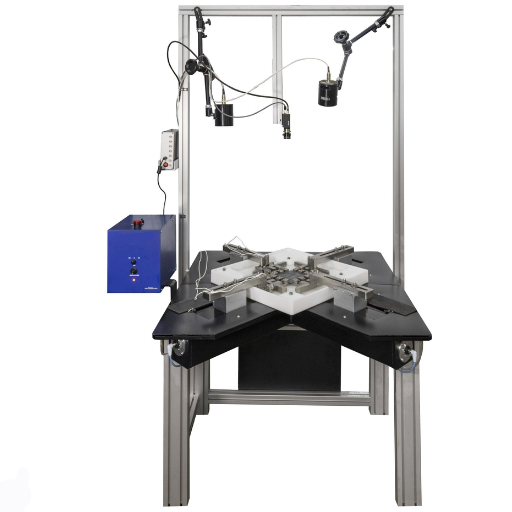
Planar biaxial testing finds multifaceted applications in several industries in the field of forensic testing for evaluation of mechanical properties of materials under multi-axial stress states. Hence, it is paramount in biomedical testing for assessing the durability and mechanical behavior of soft tissues, heart valves, and bioprosthetic implants. The aerospace and automotive industries test there by using the same method while analyzing the composite material in complex load conditions to ensure structural reliability. Material engineering processes involve planar biaxial testing, where it helps check for and confirm the anisotropic behavior of metals, polymers, and textiles to assist in fabricating materials with better performance characteristics for various applications.
Aerospace Industry Applications
From personal experience and research, aerospace applications in material testing focus heavily on assuring structural integrity and safety. Materials are evaluated for their performance under extreme stresses and various environmental conditions, such as very high temperatures and pressure fluctuations, by advanced testing means such as fatigue and composite testing. These processes are vital in the design of components like fuselages, wings, and turbine blades, where failure cannot be tolerated. Furthermore, material testing certifies new lightweight composites that enhance fuel efficiency while being durable enough for long-term aerospace use. This process enables manufacturers to fulfill stringent regulatory standards and improve overall aircraft performance.
Automotive Material Testing
Testing automotive materials is a vital process to assure that components satisfy safety, durability, and performance standards when subjected to varying operational conditions. Properties like strength, fatigue resistance, and corrosion behavior are evaluated by subjecting materials to mechanical stress, thermal changes, and chemical aggressions. The advanced techniques for testing, including tensile, impact, and climate chamber simulation tests, are generally employed to simulate actual scenarios. Such evaluation processes are essential for lightweight materials such as high-strength steel, aluminum alloys, and composites, which are designed to support fuel efficiency and environmental benefits while ensuring structural integrity. Testing thoroughly is a must to assure conformity to relevant regulations and boost automotive system reliability and life expectancy.
Biomedical Applications in Soft Tissue Engineering
The primary focus of soft tissue engineering is to repair, replace, or regenerate damaged biological tissues using combinations of cells, scaffolding materials, and bioactive agents. The leading fields of application are wound healing, vascular grafting, and reconstructive surgery, according to source. Newer biomaterials, such as hydrogels and decellularized matrices, try to emulate the extracellular matrix to facilitate cell growth and integration. Moreover, 3D bioprinting technology has greatly contributed to the fabrication of scaffolds with high architectural precision that improve their functionality in a wide range of therapeutic applications. Fighting with these technologies, researchers are aiming to resolve some major challenges related to biocompatibility, scale-up, and mechanical properties so that clinically meaningful outcomes can be ensured.
Equipment Used in Biaxial Testing
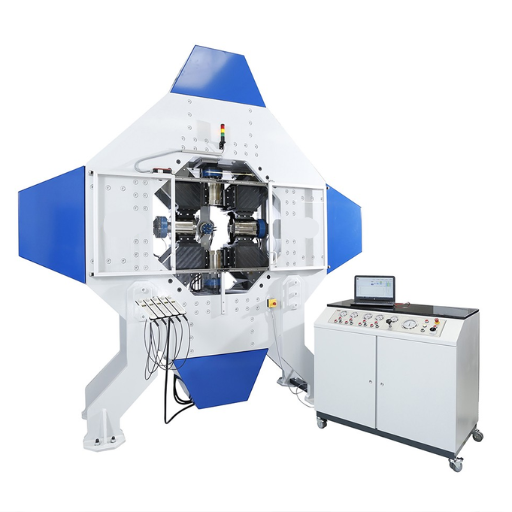
Biaxial testing requires special apparatuses to measure the mechanical properties of materials in the presence of multidirectional stresses. It involves biaxial testing machines, which are equipped with precision actuators and load cells that apply forces with great precision under orthogonal axes. High-resolution cameras or strain measurement devices, such as digital image correlation (DIC), record deformation and strain patterns in real time. Environmental chambers can sometimes be added to the working area to maintain temperature and humidity conditions. When working together, these instruments guarantee reliability and reproducibility in biaxial mechanical characterization.
Types of Planar Biaxial Test Machines
Planar biaxial test machines can be categorized into cruciform, four-piston, and multiaxial systems.
|
Type |
Key Feature |
Force App. |
Axes |
Sample Shape |
Use Case |
|---|---|---|---|---|---|
|
Cruciform |
Centralized strain focus |
Controlled |
Orthogonal |
Cross-like |
Soft tissues |
|
Four-Piston |
Independent force input |
Hydraulic |
Dual |
Square |
Biomaterials |
|
Multiaxial |
Complex stress patterns |
Distributed |
Multiple |
Customizable |
Advanced materials |
Advanced Features of Biaxial Testing Systems
1.Precise Force Control: The more advanced systems have load cells and actuators with a high resolution to apply force more accurately and in a repeatable manner via multiple axes.
2.Real-Time Data Acquisition: Sensors and software built into the system allow the continuous monitoring and recording of parameters relating to stress, strain, and deformation throughout the duration of testing.
3.Customizable Test Configurations: In modern systems, one can adjust the geometry of the sample, the loading pattern, or the boundary conditions to meet the needs of a wide variety of material types.
4.Non-Destructive Testing Capability: Advanced systems rely on non-invasive means such as optical measurement of strain to be able to observe the behavior of materials while preserving sample integrity.
5.Environmental Chambers: Many of the systems have options for temperature and humidity control so that materials can be tested under simulated conditions.
Precision and Sensitivity in Testing Machines
Precision and sensitivity are critical attributes of advanced testing machines, determining their capacity to produce reliable and accurate measurements. Precision describes the ability of the equipment to give exactly the same results when it operates under repeated conditions with very little variation. Sensitivity refers to the ability of the apparatus to discern and measure slight changes in force, displacement, or any other test parameter. These systems attain such characteristics by coupling high-resolution sensors with state-of-the-art calibration methods and intelligent software integration. This thus allows them to meet stringent test standards and to thoroughly characterize material behavior under extreme testing conditions, such as micro-scale deformation or rapid loading.
Conclusion and Future Directions in Material Testing
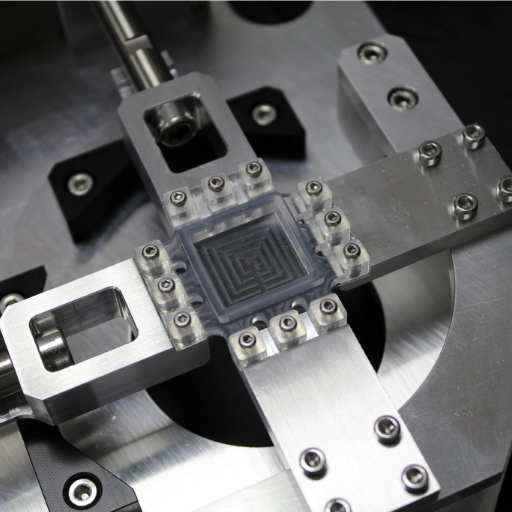
Material testing is fast evolving with the infusion of advanced technologies such as automation, machine learning, and real-time data analytics. These technologies are progressively fostering greater fidelity, efficiency, and scalability in testing processes, allowing industries in developing and validating higher-grade materials. Further direction, therefore, go into enhancing non-destructive testing techniques, employing digital twin concepts for predictive purposes, and advancing automated systems further for handling complex testing scenarios. These will certainly add to further refinement in the methodology of testing, reducing time-to-market, and increasing innovation in key sectors.
Significance of Continued Research in Biaxial Testing
A continuing research energy in biaxial testing is indispensable for realizing how materials behave in complex stress states that mimic real-life conditions. Through biaxial testing, material characterization of mechanical properties such as stress-strain and failure mechanisms can be realized in a manner often not possible with uniaxial testing, which is of particular interest to aerospace, automotive, and biomedical engineering communities, wherein materials undergo multi-axial loading in service conditions. Continued research results in the standardization of biaxial testing, thereby improving the reproducibility and reliability of test results and minimizing uncertainties in simulation models. Moreover, research advances including that in modern biaxial testing methods such as the implementation of sensor technologies or digital analysis will improve material selection, product design optimization across life cycle predictions, which will indeed lead to efficient resource allocations and optimized performance metrics.
Future Innovations in Planar Biaxial Test Machines
I still think the future for planar biaxial test machines is going to be about smart technologies and enhanced precision capabilities. Giving computer vision, AI, and ML algorithms to such systems for data analysis will surely eliminate human errors and speed up the testing cycle. The optical measurement technologies can also be advanced, improving the non-contact measurement of strain, such as digital image correlation (DIC). Modular designs with extensive material compatibility will offer another level of versatility to these machines so they can adapt to being reconfigured with minimal effort for wildly different industry applications. These kinds of innovations serve to extend the machines’ capabilities and, at the same time, meet the demands for greener and cost-saving testing techniques.
Encouraging Collaboration in Material Science Research
Promotion of collaboration in material sciences research fosters an accelerated development path to combating a complex scenario. By teaming up, one can combine expertise, state-of-the-art plug resources, and interdisciplinary approaches. Collaboration promotes sharing of ideas, cuts down duplication of effort, and sparks innovation through joint problem-solving. Online repositories, open-access journals, and global conferences are venues that further promote cooperative Activity because they allow collaboration partners to share data, methods, and results in real-time. Promoting collaboration involves the building of consortia and partnerships between industries and academia, as well as investing in shared infrastructures to guarantee that a wide array of stakeholders take part in the research process and benefit equally from it.
Reference Sources
-
Planar Biaxial Test – TestResources: This source provides an overview of planar biaxial systems, their configurations, and applications in static, dynamic, and fatigue testing.
-
Inside Planar Biaxial Testing – MTS: This article discusses the applications of planar biaxial testing in various industries, focusing on dynamic testing, fracture mechanics, and fatigue crack analysis.
-
A custom-built planar biaxial system for soft tissue material testing: A research study detailing the development of a custom biaxial system for characterizing the mechanical behavior of soft tissues.
-
Planar Biaxial Test System – MTS: This page explains the use of planar biaxial test systems in mechanical testing for industries like transportation, power generation, and civil engineering.
-
Planar biaxial testing of CXL strengthening effects – ScienceDirect: A study using biaxial mechanical testing to analyze biomechanical properties of porcine cornea before and after CXL treatment.
Frequently Asked Questions (FAQ)
Q:What is a planar biaxial test, and what does it achieve?
A:Planar biaxial testing describes a testing technique to observe mechanical behavior in biaxial loading conditions. Stress and strain can be measured in a sample, which, among others, helps in determining the tensile strength and the mechanical properties of materials, especially soft biological tissues.
Q:How is a biaxial tensile test different from a uniaxial test?
A:The major difference between a biaxial tensile test and uniaxial test lies in each test’s loading arrangement. During a uniaxial test, stress is applied onto the specimen in one direction. On the other hand, in a biaxial tensile test, a specimen experiences simultaneous stresses along two perpendicular directions. Thus, they are used to characterize materials exhibiting anisotropic behavior.
Q:What are typical applications of planar biaxial test machines?
A:Planar biaxial test machines are extensively deployed in material testing for a number of other applications, including biomedical research in order to characterize the mechanical properties of soft biological tissues, such as the aortic wall. They also have applications in composite and polymer development, wherein testing is carried out for different loading conditions with respect to fatigue life.
Q:How is a planar biaxial tester able to determine the specimen mechanical properties?
A:Planar biaxial testers determine specimen mechanical properties by applying defined loads and measuring the resulting stresses and strains. This information is collected with the help of direct or indirect deformation measurement techniques such as DIC (digital image correlation). The captured deformation data are necessary for the construction of constitutive models and for further analysis.
Q:What is the importance of a testing machine for planar biaxial loading?
A:The importance of a testing machine for planar biaxial loading comes from its ability to simulate real-life applications in which materials are subjected to multi-directional stresses. This becomes vital when the materials in question are soft biological tissues, an application where it really matters how the materials behave under physiological loads.
Q:What factors affect the condition of a biaxial tensile test?
A:Several factors influence the condition of biaxial tensile tests. They include specimen geometry, grip configuration, test speed, and test duration. Test environmental conditions and material characteristics being tested are other factors influencing biaxial tests.
Q:Could you explain about the role of a controller in planar biaxial testing systems?
A:In planar biaxial testing systems, the controller manages the test process by operating the loading actuators in synchronous concert, ensuring that forces are applied with the utmost precision and that the response of the specimen is properly monitored. This capability is crucial for producing material characterization test data that is both valid and dependable.
Q:What is a planar biaxial test system expert 8000 and its advantages?
A:The Expert 8000 Planar Biaxial Test System is a unique testing machine used for testing tensile properties under biaxial conditions. Its advantages are: high precision, able to test specimens having different geometries, and ability to be carried out under controlled conditions. A better understanding of materials is gained using this test system.
Q:How are planar biaxial test systems designed for specific sample sizes?
A:Planar biaxial test systems are designed for specific sample sizes by tailor making the gripping system and the test setup to ensure that the machine can apply loads accurately and measure the mechanical response of the specimen independent of its dimensions which is a great advantage for material testing.

